Cookie Policy
We use cookies to help improve the experience you have on this site. You can find out more here.
We use cookies to help improve the experience you have on this site. You can find out more here.
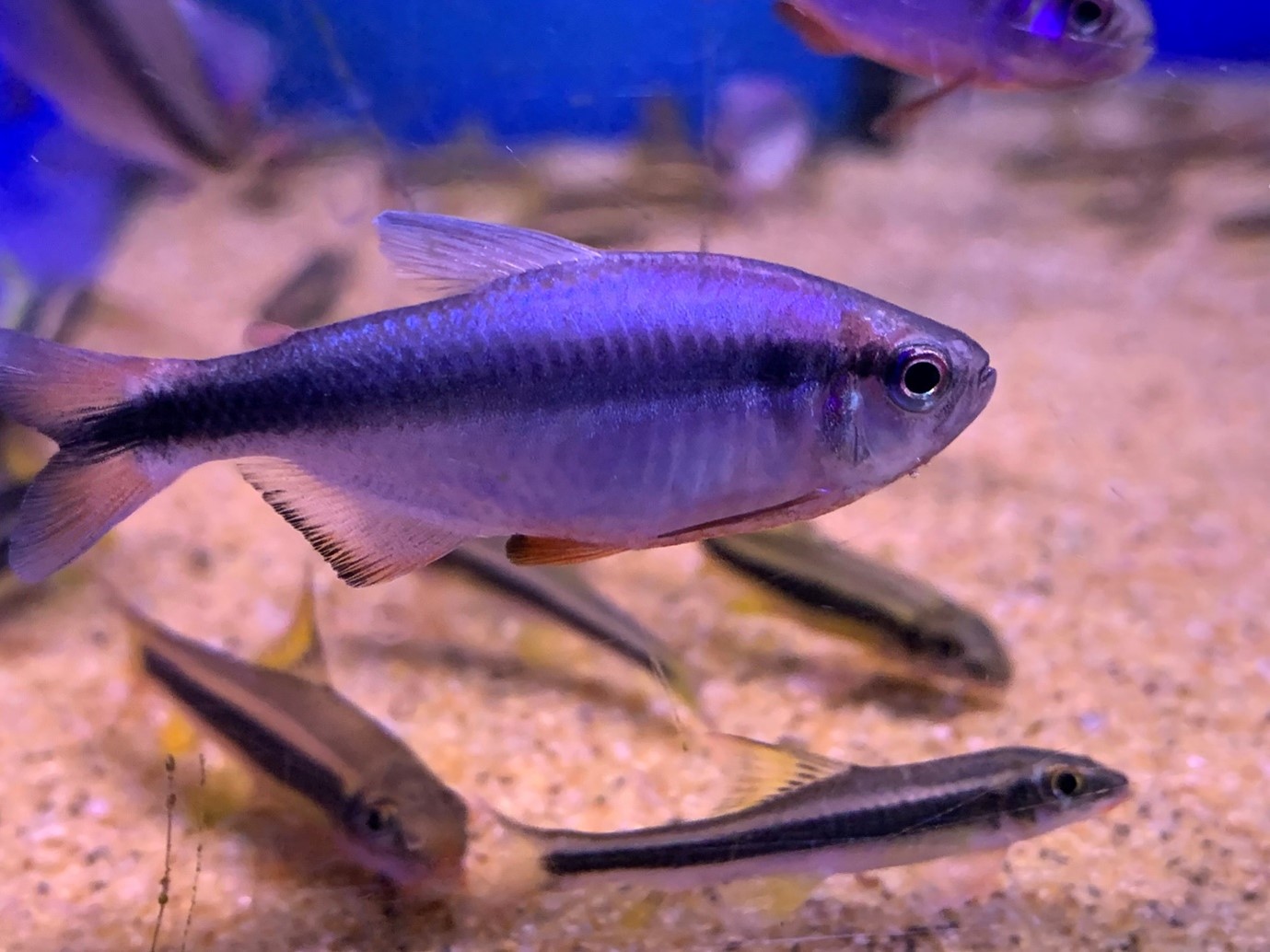
New Year, new tetra! Well, fairly new tetra – The Blue ribbon tetra (Hyphessobrycon sp. ‘Blue ribbon’) is an undescribed South American beauty that’s been appearing more and more in our stores but is easily overlooked until it starts to develop some colouration. It’s clearly related to the very similar H. melanostichos and like all of these recently imported tetras, appreciates soft water. This batch were looking good at our Huntingdon store.
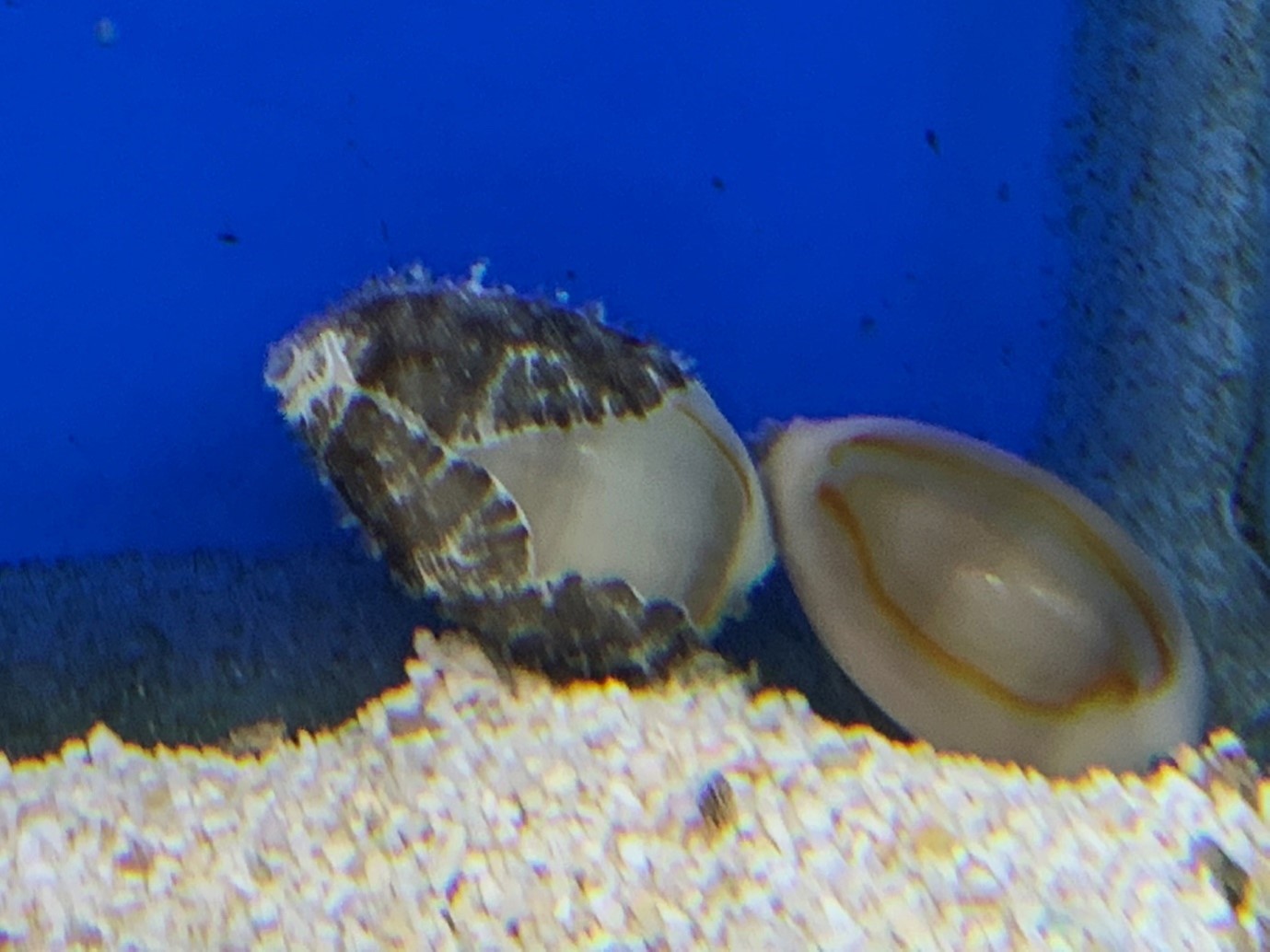
Algae-eating invertebrates are always popular with aquarium keepers and this one is valued in more ways than many. The Ring cowrie (Monetaria annulus) is one of the Money cowries and their shells were exchanged as currency until the last century. Pub quiz facts aside, these are useful additions to the reef aquarium which earn their keep by tackling a range of nuisance algae. This slightly fuzzy photo shows the reason why their shells remain so shiny – a mantle covers the shell while the animal is active. These were a highlight during a recent visit to our Leicester store.
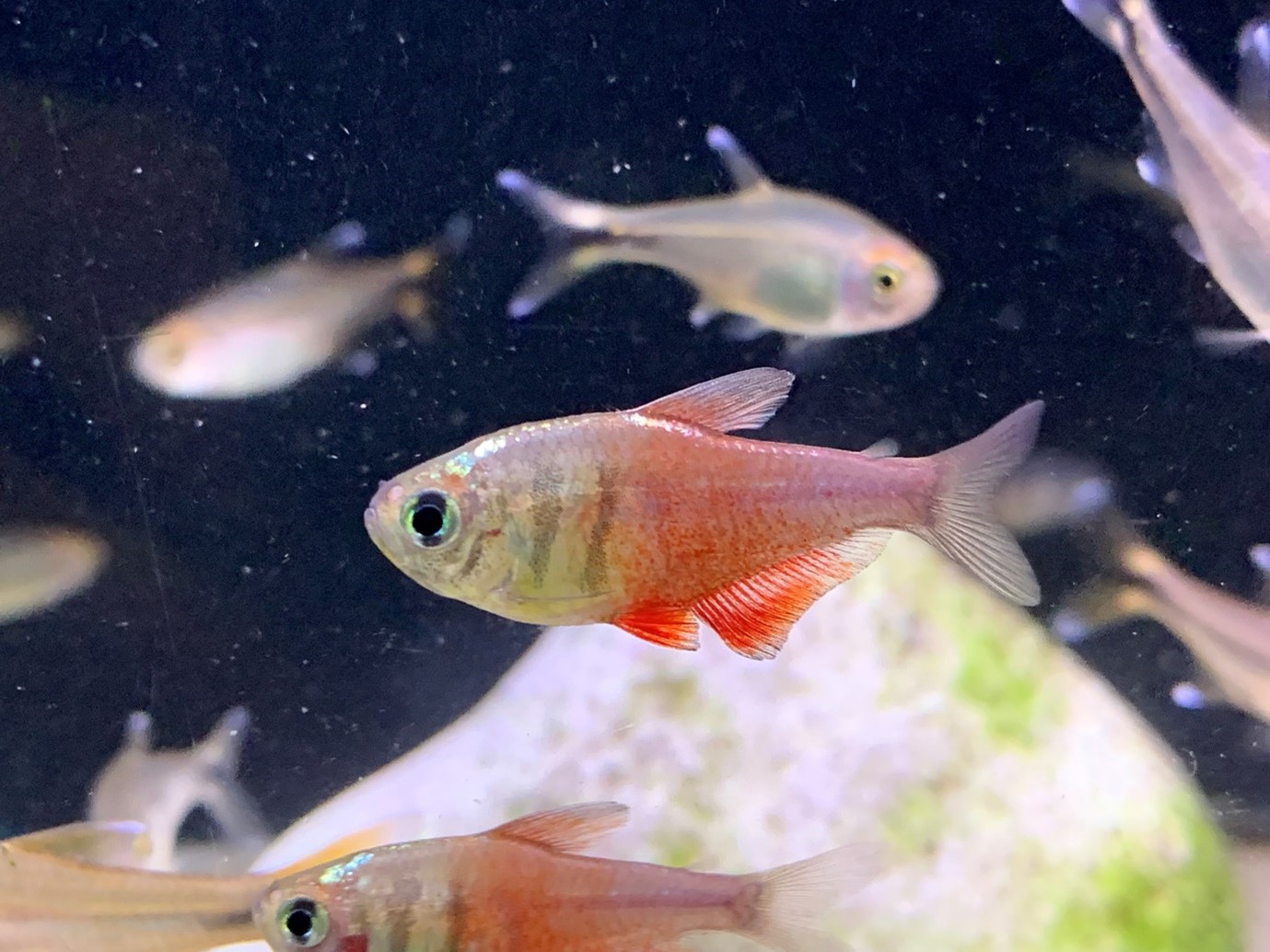
Having been kept in aquaria for around a century, the Flame tetra (Hyphessobrycon flammeus) can be found in many old aquarium books as the Von Rio or Rio tetra and was once found in most home set ups. A key to its early success was an ability to thrive in an era before reliable heating and thanks to the cooler temperatures of its ancestral home, it still makes a great choice for low temperature tanks. A number of colour forms can be found and these diamond flames were seen at our Summerhill store, which carries a great range or freshwater fishes.
https://www.fishkeeper.co.uk/help-and-advice/freshwater/characins/flame-tetra-
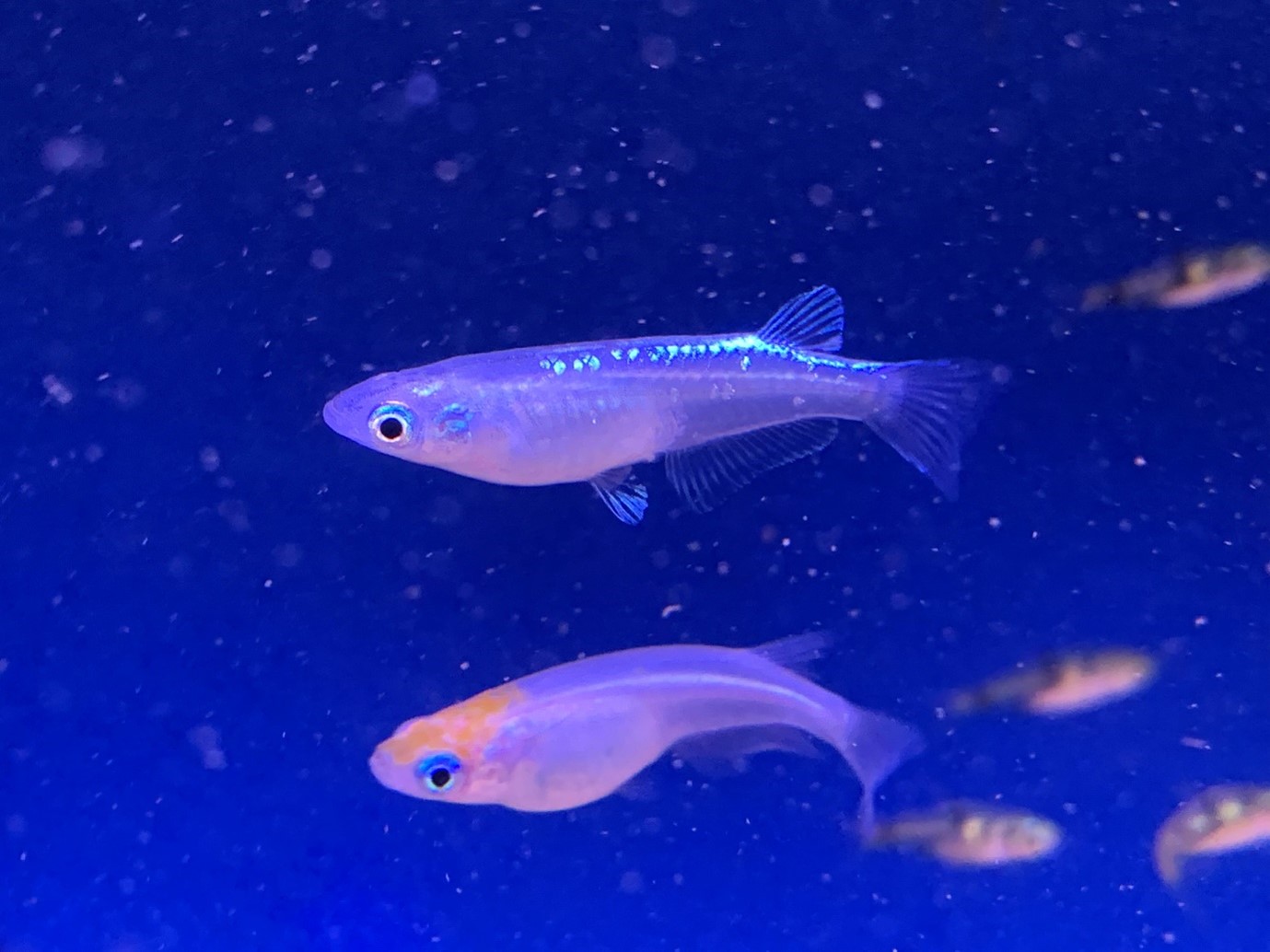
We often associate Japanese fishkeeping with Koi, and it’s true to say that it’s with good reason. However, at the other end of the scale there’s another species that’s been bred into a range of colour forms to be admired from above – the Medaka (Oryzias latipes). This photo shows two of the varieties available at our Shrewsbury store, Platinum and Redcap. As well as these fancier forms, the basic yellow strain is seen in many of our branches and all are the perfect alternative to goldfish for small, filtered tanks which bigger species rapidly outgrow.
https://www.fishkeeper.co.uk/help-and-advice/freshwater/killifish/yellow-princess-rice-fish
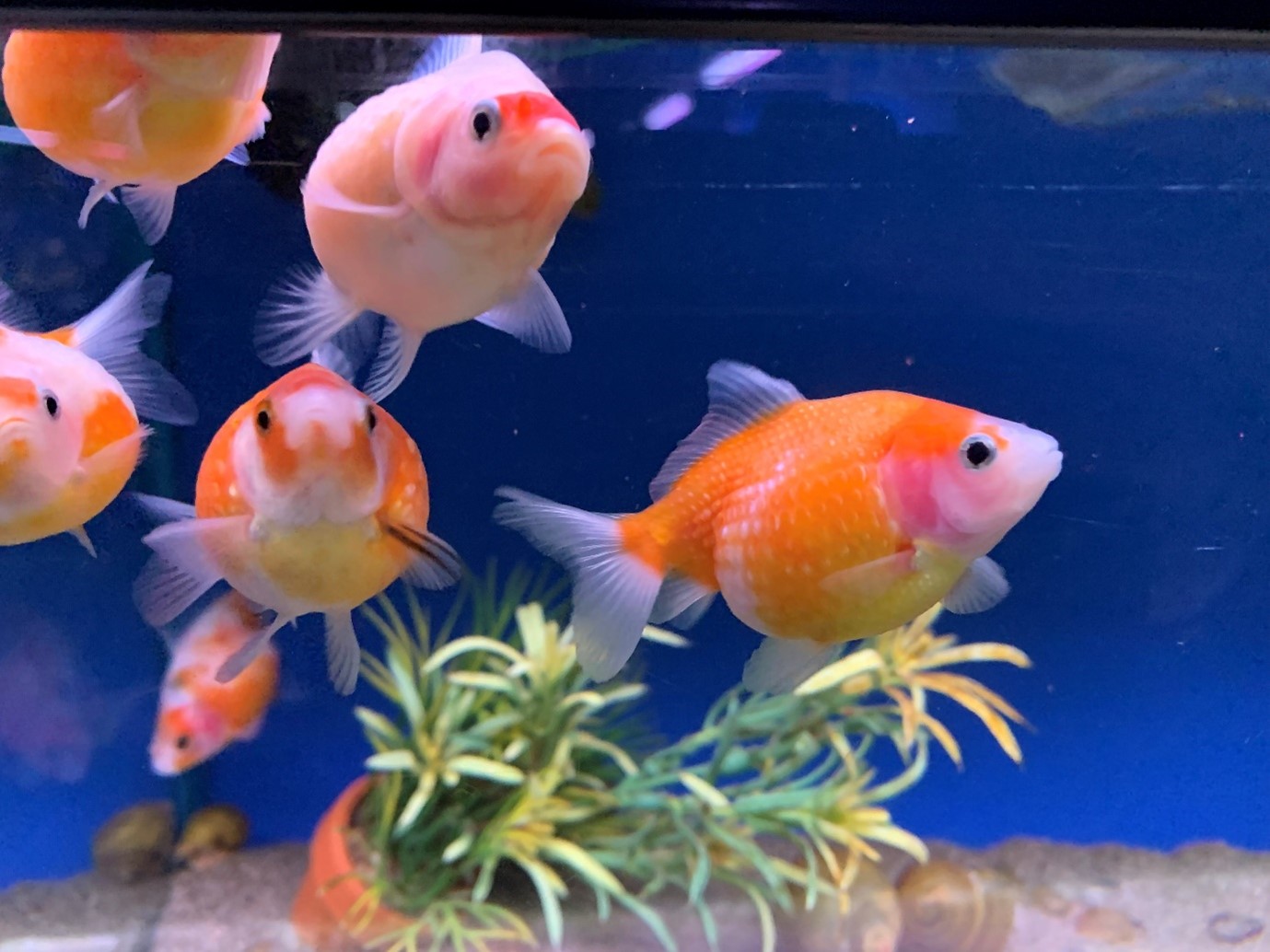
Fancy goldfish are very different to their pond-hardy cousins and typically lack the streamlined bodies of breeds such as Sarasa comets, despite all being the same species. Pearlscales (Carassius auratus) are one of the most extreme, being bred to have nearly spherical bodies with beaded scales that would be very worrying in any other fish. Given their anatomy, it’s important to give them a well-rounded diet to match, including frozen and live foods to ensure a healthy gut. This batch were at our Mere Park store.
https://www.fishkeeper.co.uk/help-and-advice/freshwater/coldwater-aquarium-fish/pearlscale
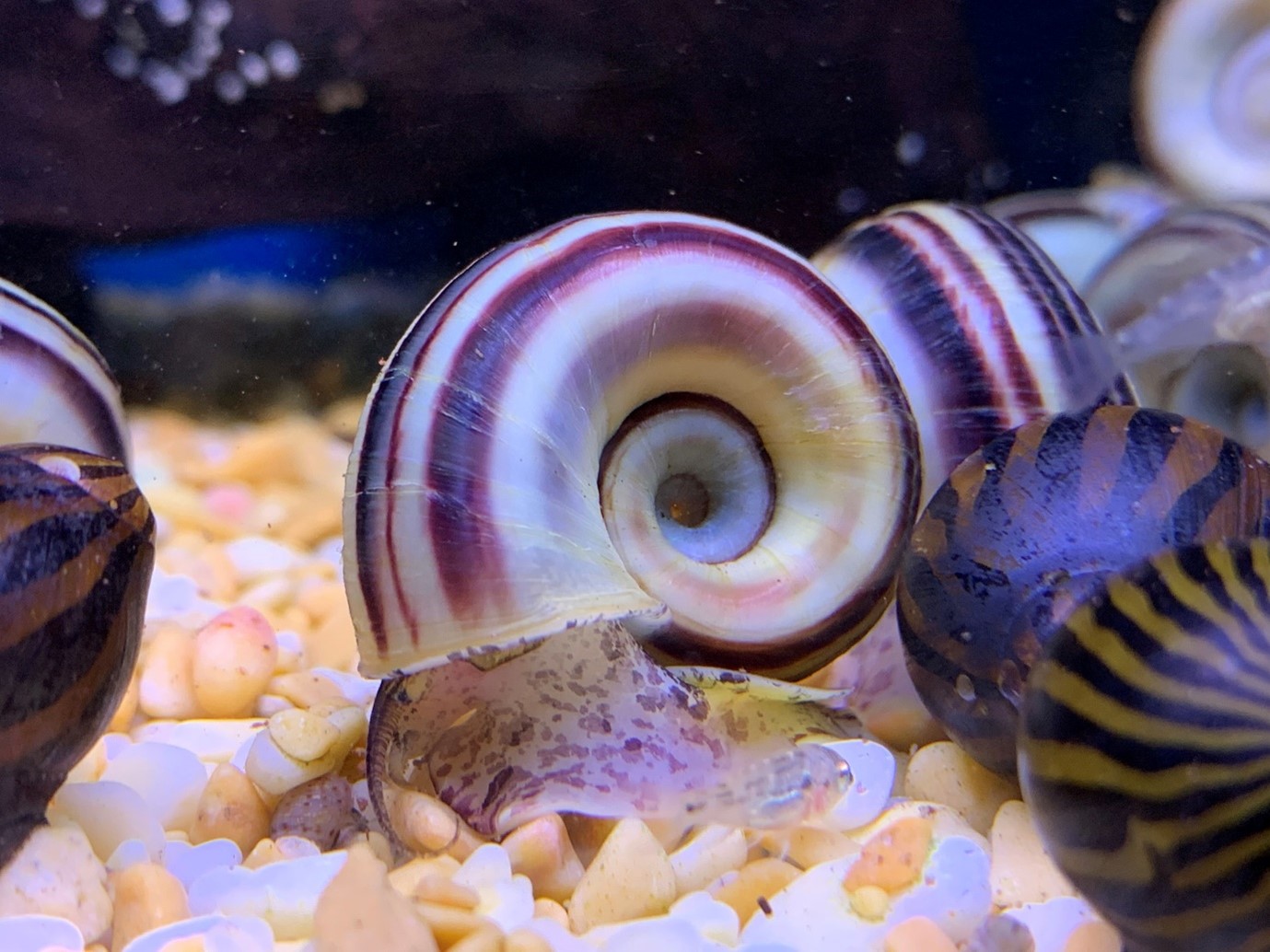
With their very different body shapes, it can be hard to remember that Colombian giant ramshorn snails (Marisa cornuarietis) are closely related to Apple snails. Place them in a well-planted tank and they’ll soon show you the family appetite for tender plants, but in the right aquarium they make a fascinating addition. These were enjoying their greens at our Stratford store.
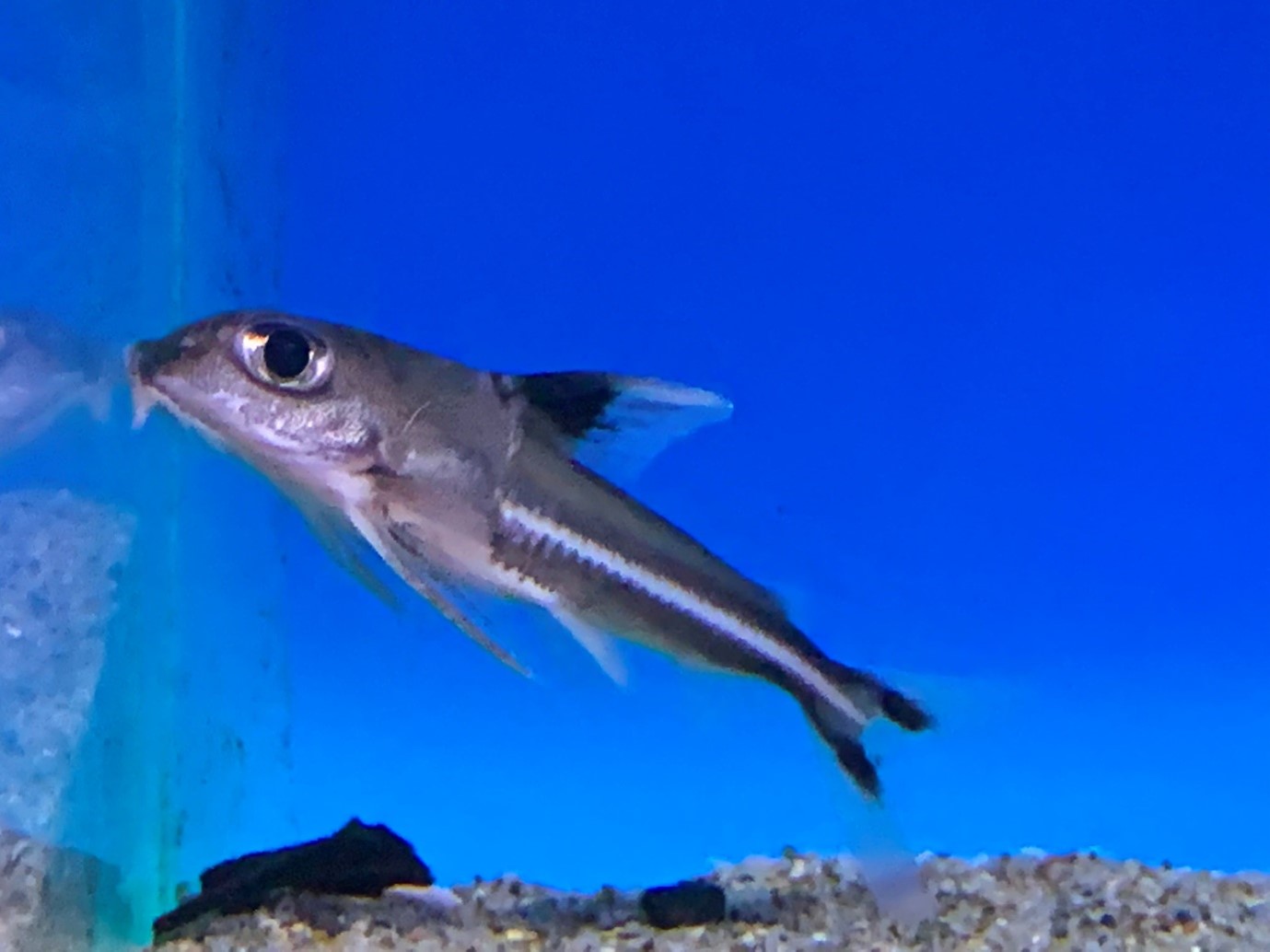
Some of the most interesting fishes you’ll meet don’t have common names, and of these many are catfish. Tenellus trimaculatus is one such fish, although translating its name and adding it to a commonly used term for these small Dorads would make it a Three-spotted mouse catfish. With large eyes for operating in dark conditions, these fish are much like Corydoras in behaviour but likely to prove nocturnal in overly bright conditions, or when kept in small numbers. As some of the smaller members of a group well known for eating snails, expect them to work through the substrate looking for small invertebrates. Their small mouths and peaceful nature should make them a good choice for softwater community tanks. This species has been seen in a number of our stores as the ‘trop season’ gets into full swing, the fish pictured was at our Leicester store.
They might not be as generous as the easter bunny, but rabbitfish are very giving when it comes to algae control. This One-spot fox face (Siganus unimaculatus) at Reefkeeper Rugby makes a great alternative to the more active tangs but will reach a size that necessitates a spacious aquarium. Every time I write about these fishes I wonder why the old common name of Badger fish isn’t more widely used, but then the native name of Spinefoot (thanks to their stinging venomous dorsal spines) is perhaps more deserved in areas where they’re caught as food fish.
https://www.fishkeeper.co.uk/fish/marine/miscellaneous-fish/one-spot-fox-face-
For delivery before Christmas, orders must be placed on or before 3pm on Wednesday 20th December. We cannot guarantee delivery of these orders pre-Christmas as we are reliant on our couriers, but will use our best endeavours to get orders placed on this date out to you before Christmas. For full details of our festive delivery and opening times click here
Please note: online orders placed after 3pm on Friday 22nd December will not be dispatched until the New Year. For full details of our festive delivery and opening times click here